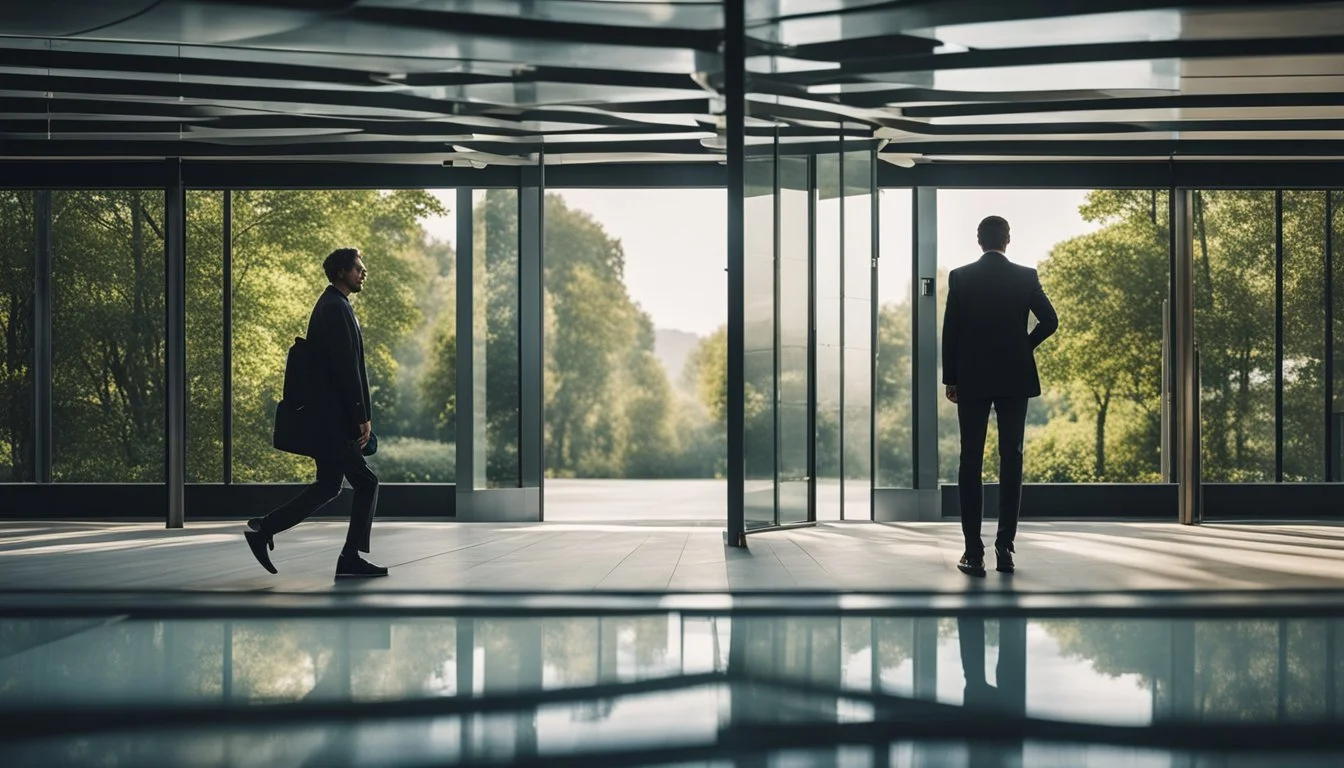The Power of the Split-Screen
Enhancing Storytelling Dynamics
Split screen is a versatile tool that has captivated filmmakers for decades. By dividing the frame, directors can present dual narratives, enhancing the storytelling with dynamic visuals. This technique allows viewers to experience multiple pieces of information at once, creating a richer and more engaging narrative.
In many iconic films, split screens have been used to build tension or highlight contrasts between characters or events. The simultaneous display of different scenes provides an intricate layer to the storytelling, making it easy to convey complex situations. It’s a unique way to keep the audience intrigued and connected to parallel storylines.
Filmmakers often use split screens sparingly due to their attention-grabbing nature. When deployed effectively, this technique can transform simple scenes into powerful storytelling moments. By presenting concurrent events, split screens foster a deeper connection between separate storylines, offering a more immersive viewing experience.
The Concept of Split-Screen Technique
The split-screen technique is a powerful cinematic tool. It involves presenting two or more shots within a single frame, allowing simultaneous display of multiple perspectives.
This method enables filmmakers to show parallel actions or contrasting characters' experiences. By offering multiple viewpoints, it can enhance storytelling and provide a dynamic visual experience.
Advantages:
Multiple perspectives: Offers a richer understanding of the narrative.
Dynamic scenes: Creates visually engaging sequences.
Contrast and compare: Highlights differences or similarities between characters or events.
Used effectively, split screens can create iconic moments. They provide an immediate visual signal of stylistic choice, guiding the audience's attention to different parts of the frame.
Filmmakers like Brian De Palma famously use split screens to heighten tension and complexity. For instance, in "Carrie," the split screen amplifies the chaos and character perspectives during climactic moments.
Stylistic Choices:
Borders and Separations: Clear divisions can emphasize different actions.
Complementary Actions: Show interconnected activities or parallel stories.
Contrasting Visuals: Highlight themes or conflicts within the narrative.
Whether to suggest individuality or to depict opponents, split-screen technique offers a flexible and impactful way to tell multiple stories simultaneously.
Historical Evolution of Split-Screen Storytelling
The split-screen technique has evolved significantly from its early experimental phases in cinema to its prominent use in modern filmmaking, influenced heavily by television and digital advancements.
Early Cinema and Experimental Phases
In the early days of cinema, split-screen techniques were largely experimental. Filmmakers used physical means such as masking parts of the lens to create dual images on film.
This allowed one actor to appear multiple times within a single frame, pioneering dual roles and complex narratives. A notable early example includes Abel Gance's 1927 film Napoléon, which showcased innovative triptych sequences.
These experimental phases laid the groundwork for more refined uses in later years, demonstrating the potential of split-screen for enhancing storytelling.
Golden Age of Television Influence
The golden age of television in the 1950s and 1960s brought split-screen techniques into mainstream media. Shows like The Patty Duke Show utilized this method to depict one actress in dual roles seamlessly.
Television not only popularized the technique but also integrated it into narrative devices, particularly in genres like soap operas and sitcoms. This period marked a transitional phase where split-screen storytelling became an everyday visual language for audiences.
TV's tight schedules and budgets demanded innovative, yet cost-effective, methods to engage viewers, solidifying split-screen as a valuable tool.
Modern Filmmaking and Digital Enhancement
Digital technology has revolutionized split-screen storytelling in contemporary cinema and television. Modern tools allow for precise and more sophisticated implementations of this technique. Films like Requiem for a Dream and 500 Days of Summer use split-screen to convey parallel narratives and emotional states effectively.
Advanced software enables seamless transitions and more complex designs, expanding creative possibilities.
These enhancements support not just narrative duality but also enhance visual aesthetics. Today, split-screen is a dynamic tool for filmmakers to explore multiple perspectives, timelines, and character experiences within a single frame.
It continues to evolve with ongoing technological innovations, ensuring its relevance and application in diverse storytelling forms.
Narrative Advantages of Split-Screen
The split-screen technique offers unique storytelling opportunities. It allows filmmakers to explore multiple narratives, enhance character development, and create striking temporal and spatial juxtapositions.
Parallel Narrative Construction
Split-screen can present concurrent storylines within a single frame. This approach provides viewers with multiple perspectives simultaneously, enhancing the complexity of the narrative.
For example, in heist films, one side of the screen may show the burglars infiltrating a building while the other shows the security guards approaching. This simultaneous display of action increases tension and keeps the audience engaged.
Furthermore, by juxtaposing different events, filmmakers can highlight thematic parallels and contrasts. This technique also enables a more dynamic, multifaceted storytelling experience that would be difficult to achieve with traditional cinematography.
Character Development and Depth
Split-screen can deepen character development by revealing the actions and emotions of multiple characters at the same time. This is particularly effective in scenes requiring simultaneous reactions or interactions.
For instance, during a pivotal argument, a split-screen can show each character's facial expressions and body language simultaneously. This dual focus allows the audience to understand the emotional nuances and underlying motivations more clearly.
Additionally, this approach can introduce backstory and parallel experiences, enriching the viewer's understanding of each character's role and growth throughout the film.
Temporal and Spatial Juxtaposition
The ability to display different times or places within a single frame is another powerful advantage of split-screen. This method can effectively convey flashbacks, foreshadowing, or concurrent events happening in different locations.
For example, a split-screen might show a character's past on one side while revealing their present actions on the other. This interplay of timelines helps to build a more layered and engaging narrative structure.
Similarly, presenting different geographical settings within the same frame emphasizes the interconnectedness of events or characters, enhancing the narrative's overall impact without the need for extensive exposition.
Technical Aspects of Split-Screen Production
Split-screen production demands meticulous attention to various technical details. This involves careful consideration of camera work, precise editing techniques, and thoughtful audio design to ensure the seamless integration of multiple frames.
Camera Work and Cinematography
Effective split-screen cinematography starts with planning each frame. Decisions on camera placement and movement must consider the entire composition. Consistency in lighting across frames is crucial to create a unified look.
Directors often use identical or mirrored setups to maintain visual harmony. Symmetry and balance are key factors when framing shots. The use of locked-down cameras is common to prevent shifting perspectives, which ensures alignment across frames.
Editing and Post-Production Techniques
Editing for split-screen involves synchronizing multiple video streams. Software like Adobe Premiere and Final Cut Pro offers tools for precise alignment. Editors must fine-tune timing and transitions to ensure actions appear coherent across frames.
Key techniques include masking and feathering to blend frames seamlessly. Special effects or color grading might be employed to distinguish or harmonize different sections. Attention to detail in continuity ensures a fluid viewer experience.
Sound Design and Audio Considerations
Sound design is crucial in split-screen production. Editors assign specific audio channels to different frames, ensuring clarity and avoiding audio clutter. Balancing dialogue, ambient sounds, and music requires mixing skills to maintain coherence.
Panning techniques guide the audience's focus, directing attention to the relevant frame. Sound overlaps and transitions are meticulously crafted to prevent jarring experiences. Thoughtful sound design complements the visual narrative, enhancing overall storytelling.
Psychological Impact on Audience Engagement
The use of split-screen storytelling can significantly influence how audiences process and engage with the material. These impacts are particularly evident in cognitive load, emotional response, and attention management.
Cognitive Load and Viewer Comprehension
Split-screen storytelling can impact cognitive load by presenting multiple streams of information simultaneously. This can either enhance or hinder viewer comprehension.
When used effectively, split screens can provide complementary information that enriches the viewing experience. Viewers can make connections between different storylines more quickly, leading to a deeper understanding of the content.
However, if overused or poorly executed, split screens can overwhelm the viewer. Excessive information can lead to cognitive overload, causing confusion and reducing comprehension. Proper balance is crucial to ensure that the audience is engaged without feeling inundated.
Emotional Response and Empathy
The ability to evoke emotional responses is central to effective storytelling. Split-screen techniques can enhance this by juxtaposing different emotional contexts.
For instance, showing parallel scenes of joy and despair can heighten emotional contrast. Viewers can experience a broader range of emotions more intensely by seeing multiple perspectives at once.
Moreover, this technique can build empathy by allowing viewers to understand different characters simultaneously. By presenting varied emotional experiences, split screens can create a more immersive and emotionally rich narrative, deepening the audience's connection to the story.
Attention Management and Retention
Attention management is critical in maintaining audience engagement. Split screens can direct the viewer's focus more efficiently by highlighting key elements of the story.
This technique can improve retention by keeping the content dynamic and visually interesting. Alternating between different scenes can prevent monotony, holding the viewer's attention longer.
However, it's essential to use clear visual cues to guide the audience. Without proper direction, viewers might miss crucial details, leading to fragmented understanding. Thoughtful design and strategic placement of split-screen elements can optimize attention management and enhance overall engagement.
Challenges and Limitations of Split-Screen
Split screen techniques in film bring unique storytelling opportunities but also present several challenges. These involve maintaining narrative clarity, dealing with technical constraints, and ensuring the accessibility and appeal of the content to the audience.
Narrative Clarity and Overcrowding
Keeping the narrative clear in split-screen sequences can be complex. Multiple frames require viewers to process more information simultaneously.
This can lead to confusion if not executed precisely. Overcrowding the screen with too many visual elements can dilute the impact and make it challenging to follow essential plotlines.
Filmmakers must carefully balance the visual content to avoid overwhelming the audience. Strategic use of color, lighting, and composition is critical in differentiating between the frames while maintaining overall coherence.
Technical Constraints and Cost
Creating split-screen effects demands significant technical resources. Advanced editing software and skilled professionals are vital to achieve seamless integration.
The cost associated with these technical requirements can be substantial. High-quality split-screen scenes often require detailed planning and additional shooting time.
Ensuring synchronization between multiple frames can further complicate the production process. Consistent frame rate and resolution must be maintained to prevent any visual discontinuity, which adds to the technical burden.
Audience Accessibility and Appeal
While split-screen can enhance storytelling, it may not resonate with all audience members. The technique demands a higher level of visual literacy to interpret multiple storylines simultaneously.
This may alienate casual viewers who prefer straightforward narratives. Moreover, the visual style may not suit every genre or film, limiting its universal appeal.
The challenge is to use split-screen effectively without alienating the audience. Filmmakers must ensure that the technique complements and enhances the storytelling rather than detracting from it, while still catering to diverse audience preferences.
Case Studies: Successful Split-Screen Narratives
Split-screen techniques have been effectively used across various media to provide a richer and more complex narrative experience. Here are key examples from film and television, advertising and music videos, and video games.
Film and Television Landmarks
In film and television, split-screen allows simultaneous storytelling, enhancing the narrative's depth.
Brian De Palma, a pioneer in split-screen, used it in Carrie (1976) to heighten tension and show simultaneous events. The prom scene juxtaposes chaos and normalcy, underscoring the horror.
24, the TV series, utilized split-screen extensively. Viewers follow parallel storylines, keeping up with multiple characters and plot lines. This technique added real-time urgency.
Advertising and Music Videos
Advertisers and musicians use split-screen to craft engaging and memorable content.
In Apple's 2011 iPhone 4 commercial, split-screen showcased FaceTime's capabilities. Simultaneous visuals of conversations highlighted the product’s feature, ensuring clarity and engagement.
Coldplay's "The Scientist" music video effectively employed split-screen. Different perspectives of the same story were shown side-by-side, enhancing the song’s emotional impact.
Video Games and Interactive Media
Split-screen in video games brings a collaborative experience, promoting teamwork and interaction.
GoldenEye 007 (1997) on the Nintendo 64 revolutionized multiplayer gaming. Its split-screen mode allowed friends to play together, fostering a sense of camaraderie.
The game A Way Out (2018) showcased split-screen to narrate the journey of two characters escaping prison. Players experienced different viewpoints of the same storyline, enhancing immersion.
Each of these case studies demonstrates how split-screen techniques can provide a powerful and multifaceted narrative experience across multiple media.
The Future of Split-Screen Storytelling
Emerging innovations are reshaping how split-screen storytelling can be used, with new technological advancements, shifting audience consumption habits, and cross-media opportunities leading the way.
Technological Advancements and AI
Technological advancements, particularly in artificial intelligence (AI), are revolutionizing split-screen storytelling. AI can automate editing processes, enabling filmmakers to create complex split-screen effects with ease.
Moreover, machine learning algorithms can analyze vast amounts of data to predict viewer preferences. This allows for personalized content delivery, where split-screen narratives can be tailored to individual viewers. As VR and AR technologies mature, immersive split-screen experiences will become more feasible, providing deeper, multi-threaded storytelling within a single frame.
Evolving Audience Media Consumption
The way audiences consume media is changing rapidly. With multi-screen setups becoming common in households, viewers are increasingly comfortable engaging with multiple streams of information simultaneously.
Interactive split-screens are gaining popularity, offering viewers control over which narrative thread they want to follow. Streaming platforms are also experimenting with split-screen formats to maintain engagement and offer unique viewing experiences. Understanding these evolving habits is crucial for creators aiming to keep audiences captivated in a saturated media landscape.
Cross-Media Opportunities and Innovations
Split-screen storytelling extends beyond traditional cinema and television. Video games, for instance, have long used split-screen to allow simultaneous gameplay for multiple players.
Social media platforms are also integrating split-screen features to facilitate live interactions and collaborative content creation. Additionally, transmedia storytelling is emerging, where narratives can be expanded across different media formats, seamlessly integrating split-screens into films, web series, and interactive apps. This creates a rich, interconnected story world that can captivate audiences across various platforms.




